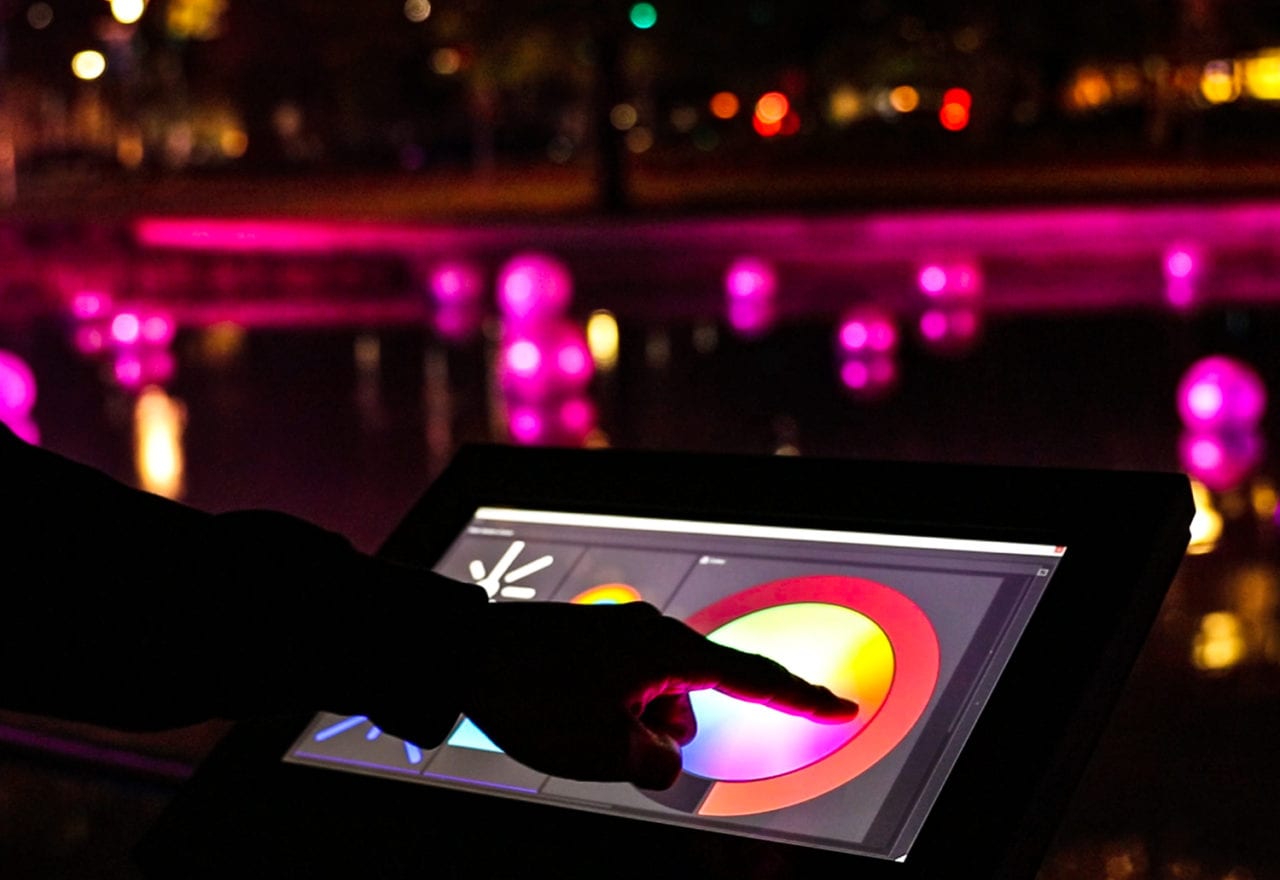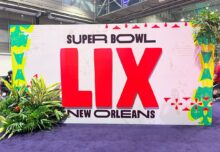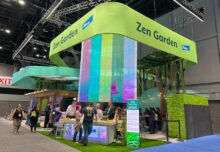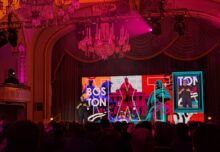How sustainability was built into the framework of HP’s Reinvent forum
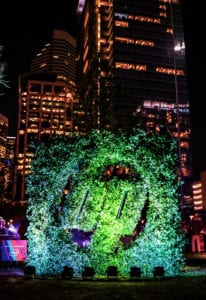
The brand this year built sustainability directly into the framework of HP Reinvent.
Sustainability is part of the company ethos at HP Inc. From its supply chain to operations to environmental initiatives to products, sustainability is woven throughout the corporation, and, naturally, it is woven throughout the brand’s events, too. At HP Reinvent 2019, the annual flagship world partner forum for HP’s leading channel, retail and alliance partners, sustainability was built directly into the framework of the event. There was a strategy. There were numerous stakeholders involved. There were metrics established. HP created a baseline to enable the team to analyze the impact of the efforts year-over-year on the entire event and the brand.
Held at the George R. Brown Convention Center in Houston, HP Reinvent attracted 1,500 executives. The program included HP channel announcements, news and emerging industry trends, and insights on HP’s strategic direction from executives, general sessions, executive one-on-one meetings, focus sessions and roundtables. It also included an evening celebration event with live music and engagements.
Like the rest of the show, the evening celebration, too, was sustainable throughout. The HP team infused local culture and flavor into the event, which in turn helped reduce the event’s carbon footprint by reducing travel and freight costs. This included hiring local vendors, local chefs for the catering, local artists to inspire the space as well as local musicians for entertainment (Kindle Communications, Chicago, handled).
We tapped Jane Culcheth Beard, head of strategic events at HP Inc., and Glenda Brungardt, global event manager at HP Inc., for insights on elevating sustainability from an add-on to a bona fide strategy. Here’s a checklist of areas their strategic planning covered.
 More on This Topic:
More on This Topic:
- Green 2.0: How Brands Are Immersing Consumers in Modern Environmental Causes
- Absolut Creates a Sustainable Footprint at Coachella for ‘People, Planet and Product’
1. Setting goals.
For sustainability to become part of the overall strategy, you have to set goals first. HP aligned its sustainability strategy from two angles: with HP’s own sustainability practices and focus on “people, planet and community,” and then, with the UN’s goals for sustainability. There are 17 goals the UN has outlined, and HP identified nine that its events team felt it could make an impact on in the planning of HP Reinvent.
“We looked specifically at those goals, so that when we started the planning for the event, we knew what areas of sustainability we wanted to focus on and then we planned together with our vendor partners, who are critical in this,” says Culcheth Beard. “So, we established what our goals were going to be, how we were going to measure them, and really, it created a framework to form our baseline. That was how we did it to make sure it wasn’t a greenwash. Sustainability was embedded right from the beginning.”
2. Involving all stakeholders.
It takes a village to activate a sustainability plan at scale, so HP’s teams communicated early on what they wanted to do to get buy-in and ensure that everyone, from agency partners to vendors to the hotel, was on the same page. The executive chef, too, got behind the plan and according to Culcheth Beard, was excited and inspired to leverage local producers and local products for the food service. It created a ripple effect.
“Once we started engaging with vendors and sharing our goals with them, it was critical also to see what they already have in place and what we could collaborate with them on, so it wasn’t starting from ground zero,” says Brungardt. “Once they knew our goals, it was easy to have a conversation with them to say, ‘Hey, what are you guys already doing that will play into what we want to do here.’”
FACT: More than 41 percent of all buffet and grab-and-go items were sourced within 250 miles of Houston.
3. Focusing on overhead.
For the evening celebration event, all of the lighting displays were installed by a LEED certified lighting design company using LED fixtures to reduce power consumption significantly. Glowing light orbs that floated on the lake beside the venue were of zoological marine grade—meaning, they wouldn’t transport any waterborne pollutants or parasites that could harm the ecosystem.
“Part of what we’re doing when we create an event experience is we want to make sure there’s an emotional connection with our attendees,” says Culcheth Beard. “The content, the sessions have to be great, right, but the actual experience has to make them feel something. They have to feel proud, feel engaged, feel excited.”
FACT: Approximately 5,034 kWh of 100 percent renewable, clean wind energy powered the evening celebration.
4. Minimizing waste.
Throughout Reinvent, HP eliminated single-use plastics and supplied attendees with reusable water bottles and water stations. The brand was careful to not use unnecessary lanyard plastic as well. All of the signage in place from the show was upcycled and transformed into giveaways for future shows, so they did not go into the landfill.
HP also launched a food donation program that became a catalyst in the city for other recent venue events to join in and donate their unused food as well. Ultimately, 3,944 pounds of event food was donated to the Houston community, from HP Reinvent and other local events, translating to 4,733 meals reaching those in need.
FACT: 1,400 unused or lightly used room amenities were collected and donated by the Hilton Americas to Houston outlets.
5. Leveraging creative engagements.
Sustainability doesn’t have to live solely within operations. HP at its evening celebration event leveraged the natural landscape as its canvas for décor and elevated it with LED outdoor interactive lighting. With the tap of a button or spin of a dial on a tablet station, attendees could change the color scheme of the entire five-acre footprint with various lighting effects.
Then, to promote recycling on-site at the event, attendees were able to vote on upcoming songs for the band to play that corresponded with recycling bins and their items, like drink cups. And, in a self-guided nature tour, attendees could take a “sustainability walk” along the property where on HP devices they could learn eco-friendly facts about the event and the brand’s overall efforts. Rather than erect one-time-use flashy signage, HP installed a living logo—a giant HP logo created from greenery, up-lighted and then live-wired with a geofence with branded filters to make it an interactive, shareable experience on platforms like Snapchat.
“One of the two myths are: If it’s sustainable, it’s going to be expensive; and if it’s sustainable, it’s going to be boring. And that could not be farther from the truth,” says Culcheth Beard. “It kind of gives you that permission to get creative about different ways of doing things.”
FACT: 4,100 feet of single-use plastic straws was saved by opting for straws by request during meals and breaks.
6. Collecting data.
While sustainability is important to HP as a company, the brand also identified it as a key area of interest for its event attendees. Surveys and data collection helped the team get the buy-in needed to make the sustainability program successful. Through the data gathering, HP found that their customers and attendees were consistently asking what the brand was doing around sustainability and impact.
“Sustainability has been at the heart of HP going back to the early years, but we sat back and said, OK, how do we look at this more focused and really define it,” says Brungardt. “How we execute our events has to be reflective of our core values and sustainable impact, and when HPE was formed and split off, for HP, sustainability has been at the heart of that reinvent journey we’ve been on as a company.”
*This article as originally published in 2019 and is updated periodically


